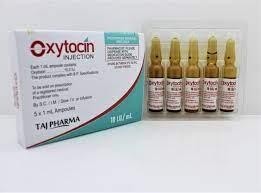A nurse is planning care for a newborn who is large for gestational age. Which of the following actions should the nurse include in the plan of care? (Select all that apply.)
Check the newborn's skin for ecchymosis.
Assist the mother to breastfeed the newbom after birth.
Obtain a stool sample of meconium.
Assist with administering a blood transfusion to the newborn.
Check the newborn's blood glucose level.
Correct Answer : A,B,E
A) Correct - Checking the newborn's skin for ecchymosis can help identify potential birth-related injuries, as large-for-gestational-age newborns might experience more trauma during delivery.
B) Correct - Breastfeeding can help regulate the newborn's blood glucose levels and provide necessary nutrients.
C) Incorrect- Meconium is the early stool passed by a newborn and might be checked for various reasons but is not specifically related to a large-for-gestational-age newborn.
D) Incorrect- Administering a blood transfusion to a newborn is not typically a part of the care plan for large-for-gestational-age newborns.
E) Correct- The nurse should check the newborn's blood glucose level regularly and provide interventions as needed.
Nursing Test Bank
Naxlex Comprehensive Predictor Exams
Related Questions
Correct Answer is C
Explanation
A) Incorrect- Nifedipine is a calcium channel blocker used for conditions like high blood pressure, not for controlling postpartum bleeding.
B) Incorrect- Terbutaline is a bronchodilator and is not typically used for postpartum bleeding.
C) Correct - Oxytocin is a uterotonic medication often used to control excessive bleeding after childbirth. It helps the uterus contract and reduces the risk of postpartum hemorrhage.
D) Incorrect- Betamethasone is a corticosteroid used to enhance fetal lung maturity when given to pregnant clients at risk of preterm birth

Correct Answer is B
Explanation
A) Incorrect- Urinary retention can be a concern but is not as immediately life-threatening as respiratory depression.
B) Correct - A respiratory rate of 11/min is significantly lower than the normal range and indicates respiratory depression, which can be life-threatening. It requires immediate attention.
C) Incorrect- A blood pressure of 105/62 mm Hg is within a normal range for an adolescent and does not require immediate intervention.
D) Incorrect- Blurred vision might be a side effect of medications, but respiratory depression takes priority due to its potential to lead to serious complications.
Whether you are a student looking to ace your exams or a practicing nurse seeking to enhance your expertise , our nursing education contents will empower you with the confidence and competence to make a difference in the lives of patients and become a respected leader in the healthcare field.
Visit Naxlex, invest in your future and unlock endless possibilities with our unparalleled nursing education contents today
Report Wrong Answer on the Current Question
Do you disagree with the answer? If yes, what is your expected answer? Explain.
Kindly be descriptive with the issue you are facing.
